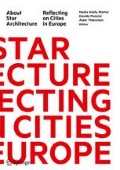Abstract
Many want to see architecture as an art that is autonomous, freely displaying its author’s ideas and creativity. On the contrary, this chapter considers star architecture as part of broader socio-economic and symbolic relationships and concentrates on the production of identities in the framework of globalisation since the late twentieth century. The question of how and why star architecture represents certain local and global identities and how it interacts with different players in its urban surroundings as well as with the world is examined. The representation of star architecture buildings in highly visible cities is often affected by the process of financialisation and the compression of time and space into hyperreal settings, connecting buildings as mere images. This chapter argues that social production of star architecture implies, in European cities in particular, the representation of both local and global identities for diverse and sometimes conflicting purposes.
Access this chapter
Tax calculation will be finalised at checkout
Purchases are for personal use only
References
Adam R (2012) The globalisation of modern architecture: the impact of politics, economics and social change on architecture and Urban Design since 1990. Cambridge Scholars, Newcastle upon Tyne
Alaily-Mattar N, Dreher J, Thierstein A (2018) Repositioning cities through star architecture: how does it work? J Urban Des 23(2):169–192
Bartmanski D, Alexander JC (2012) Materiality and meaning in social life: towards an iconic turn in cultural sociology. In: Bartmanski D (ed) Iconic power: materiality and meaning in social life. Palgrave Macmillan, New York, pp 1–12
Baudrillard J (1981) Simulacra and simulation. The University of Michigan Press, Michigan
Berger J (1972) Ways of seeing. Penguin Books, London
Borden I, Rendell J (2000) Inter sections: architectural histories and critical theories. Routledge, London/New York
Castells M (2010) The network society. Blackwell, Oxford
Colomina B (2008) Media as modern architecture. In: Vidler A (ed) Architecture between spectacle and use. Sterling and Francine Clark Art Institute, Williamstown, pp 58–76
Deamer P (2014) Architecture and capitalism. 1845 to the present. Routledge, London
Debord G (1967) Society of the Spectacle. Black & Red, Detroit
Delitz H (2011) Jenseits von Krise und Repräsentation. Zum Verhältnis von Architektur und Gesellschaft. In: ARCH+, Zeitschrift für Architektur und Städtebau, Nr. 204: Krise der Repräsentation, pp 22–26
Friedmann J (2006) The World City hypothesis. In: Brenner I, Kell R (eds) The global cities reader. Routledge, London/New York, pp 67–72
Goffman E (1963) Stigma. Notes on the management of spoiled identity. Simon & Schuster, New York
Groys B (2017) Towards a new universalism. In: e-flux Journal #86, http://www.e-flux.com/journal/86/162402/towards-a-new-universalism (Accessed 20 Aug 2018)
Hannerz U (1990) Cosmopolitans and locals in world culture. Theory Cult Soc 7(2–3):237–251
Harvey D (1990) The condition of postmodernity. Blackwell, Cambridge/Oxford
Jameson F (1991) Postmodernism, or, the cultural logic of late capitalism. Duke University Press, Durham
Jencks C (1987) The language of PoMo architecture. Rizzoli, New York
King AD (2004) Spaces of global cultures: architecture, urbanism, identity. Routledge, New York
Klingman A (2007) Brandscapes. Architecture in the experience economy. MIT Press, Cambridge
Lefebvre H (1992) Rhythmanalysis: space, time and everyday life. Bloomsbury, London/New York
Martin R (2016) Remarks on the production of representation. In: Andraos A (ed) The Arab City and representation. Columbia Books on Architecture and the City, GSAPP, New York
Palermo PC, Ponzini D (2015) Place-making and urban development: new challenges for contemporary planning and design. Routledge, London
Ponzini D, Nastasi M (2016) Starchitecture. Scenes, actors, and spectacles in contemporary cities. Monacelli Press, New York. [original edition 2011]
Rivera LA (2008) Managing “spoiled” national identity: war, tourism, and memory in Croatia. Am Sociol Rev 73(4):613–634
Robin E (2018) Performing real estate value (s): real estate developers, systems of expertise and the production of space. Geoforum, forthcoming
Sassen S (2001) The global city. Princeton University Press, Princeton, New York/London/Tokyo
Saunders WS (ed) (2005) Commodification and spectacle in architecture: a Harvard Design Magazine reader. University of Minnesota Press, Minneapolis
Scheppe W (2011) Realabstraktion und Fassade. Zur politischen Ökonomie der “Stadt der Gesellschaft”. In: ARCH+, Zeitschrift für Architektur und Städtebau, Nr. 204: Krise der Repräsentation, Oktober 2011, pp 8–18
Sklair L (2017) The icon project: architecture, cities and capitalist globalization. Oxford University Press, New York
Spencer D (2016) The architecture of neoliberalism. Housman Books, London
Stierli M (2016) Architecture and visual culture: some remarks on an ongoing debate. J Vis Cult 15(3):311–316
Till J (2008) Architecture and contingency. Field 1(1):120
Trüby S (2014) Geldkulturen. Eine Einführung. In: Trüby S (ed) (2017) Absolute Architektur Beginner. Schriften 2004 – 2014. Fink, Paderborn, pp 56–66
Yaneva A (2009) Making the social hold: towards an actor-network theory of design. Des Cult 1(3):273–288
Author information
Authors and Affiliations
Corresponding author
Editor information
Editors and Affiliations
Rights and permissions
Copyright information
© 2020 Springer Nature Switzerland AG
About this chapter
Cite this chapter
Leconte, U. (2020). The Representation of Star Architecture between Local and Global Identities. In: Alaily-Mattar, N., Ponzini, D., Thierstein, A. (eds) About Star Architecture. Springer, Cham. https://doi.org/10.1007/978-3-030-23925-1_3
Download citation
DOI: https://doi.org/10.1007/978-3-030-23925-1_3
Published:
Publisher Name: Springer, Cham
Print ISBN: 978-3-030-23924-4
Online ISBN: 978-3-030-23925-1
eBook Packages: Literature, Cultural and Media StudiesLiterature, Cultural and Media Studies (R0)

